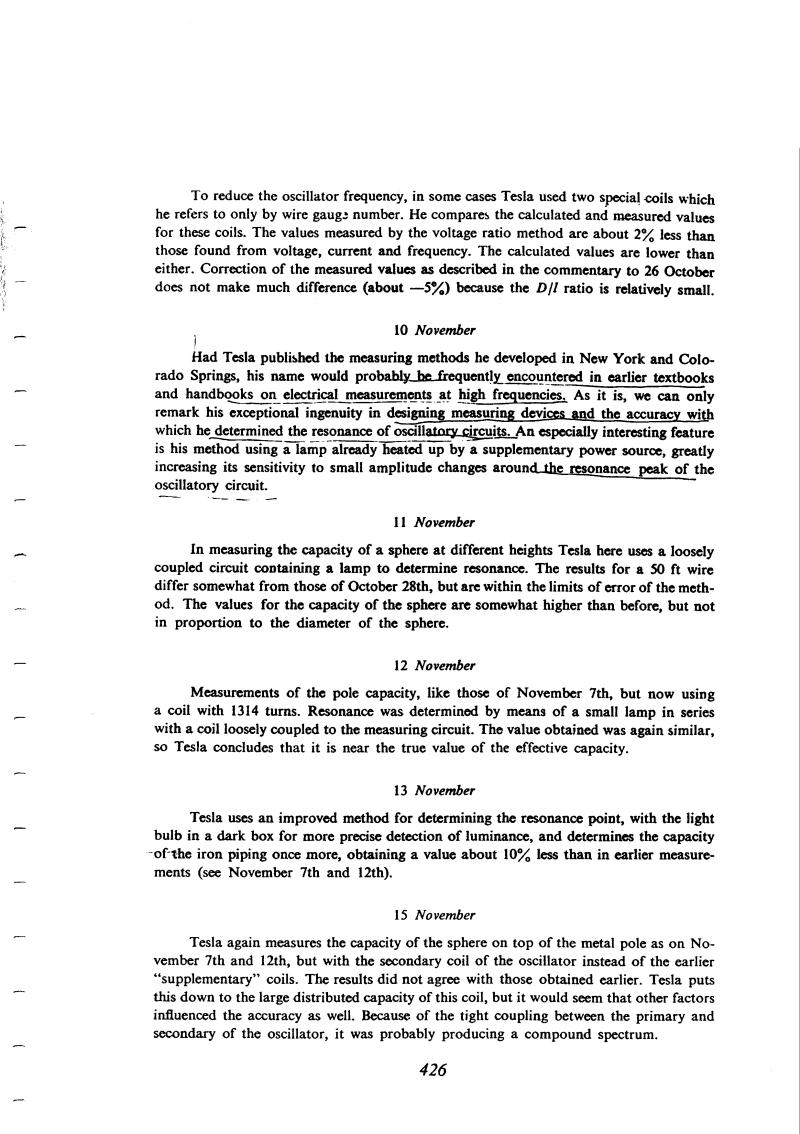
Nikola Tesla Books
To reduce the oscillator frequency, in some cases Tesla used two special coils which he refers to only by wire gauge number. He compares the calculated and measured values for these coils. The values measured by the voltage ratio method are about 2% less than those found from voltage, current and frequency. The calculated values are lower than either. Correction of the measured values as described in the commentary to 26 October does not make much difference (about - 5%) because the D/l ratio is relatively small.
November 10
Had Tesla published the measuring methods he developed in New York and Colorado Springs, his name would probably be frequently encountered in earlier textbooks and handbooks on electrical measurements at high frequencies. As it is, we can only remark his exceptional ingenuity in designing measuring devices and the accuracy with which he determined the resonance of oscillatory circuits. An especially interesting feature is his method using a lamp already heated up by a supplementary power source, greatly increasing its sensitivity to small amplitude changes around the resonance peak of the oscillatory circuit.
November 11
In measuring the capacity of a sphere at different heights Tesla here uses a loosely coupled circuit containing a lamp to determine resonance. The results for a 50 ft wire differ somewhat from those of October 28th, but are within the limits of error of the method. The values for the capacity of the sphere are somewhat higher than before, but not in proportion to the diameter of the sphere.
November 12
Measurements of the pole capacity, like those of November 7th, but now using a coil with 1314 turns. Resonance was determined by means of a small lamp in series with a coil loosely coupled to the measuring circuit. The value obtained was again similar, so Tesla concludes that it is near the true value of the effective capacity.
November 13
Tesla uses an improved method for determining the resonance point, with the light bulb in a dark box for more precise detection of luminance, and determines the capacity of the iron piping once more, obtaining a value about 10% less than in earlier measurements (see November 7th and 12th).
November 15
Tesla again measures the capacity of the sphere on top of the metal pole as on November 7th and 12th, but with the secondary coil of the oscillator instead of the earlier âsupplementaryâ coils. The results did not agree with those obtained earlier. Tesla puts this down to the large distributed capacity of this coil, but it would seem that other factors influenced the accuracy as well. Because of the tight coupling between the primary and secondary of the oscillator, it was probably producing a compound spectrum.
426

